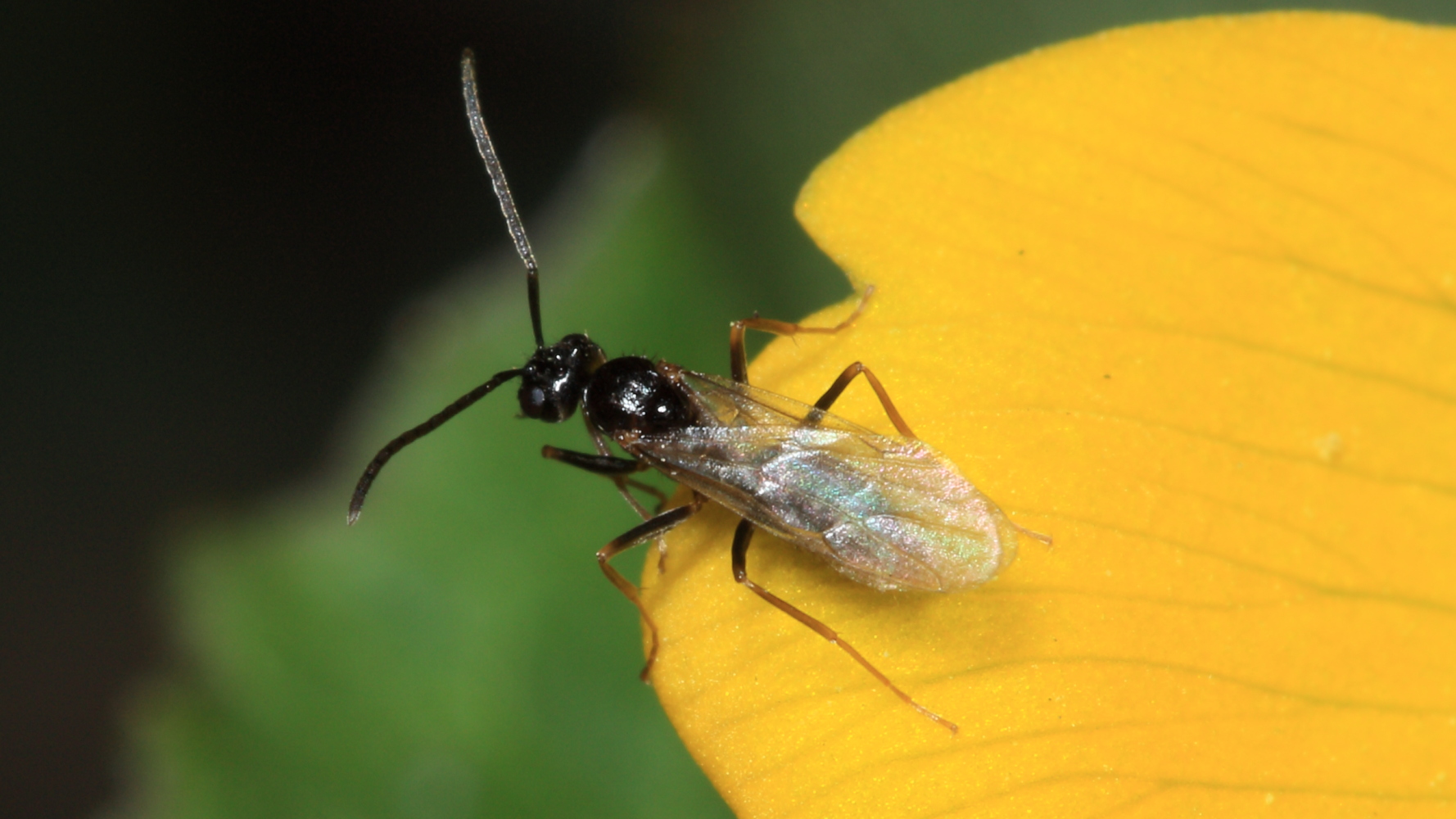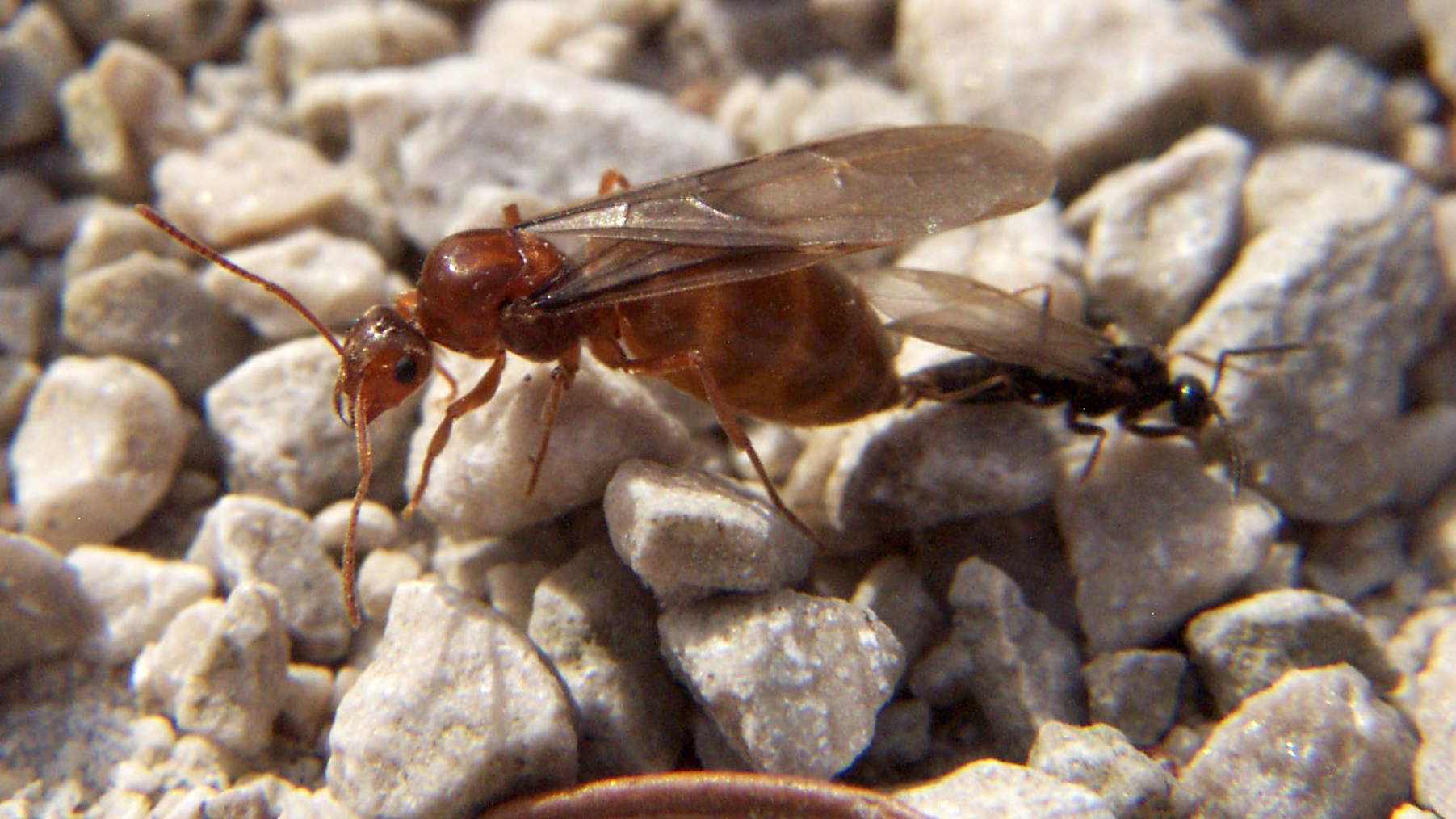False Honey Ants – Prenolepis imparis
Ants in the genus Prenolepis are commonly known as “false honey” ants. They range over much of North America, into southern Canada. This is the only species in this genus. The false honey ants are very well adapted to foraging in the cold, and are seen in conditions where other ant species are absent; they forage even at freezing temperatures. Males and females both overwinter in underground nest; they are first ants to make nuptial flights in the spring: this queen and drone were photographed on April 14th, very early in the year for such activity.
False Honey Ant Queen and Drone
These ants become less active as the weather warms, and appear to have very little foraging during the hot days of summer. They mobilize again with the return of cooler temperatures in the autumn. I’m thinking this behavior may be an adaptation to ice age conditions. If this is true, these ants will probably disappear from the earth very soon, thanks in part to the idiotic ideas and policies of the Bush administration.*
Drone false honey ant on Marsh Marigold (Caltha palustris)
Live adult male and female false honey ants photographed in the wild at Winfield and Franklin Creek, Illinois
Insects & Spiders | Bees & Wasps Index | Bees & Wasps Main | Beetles Index


